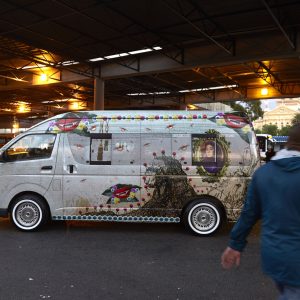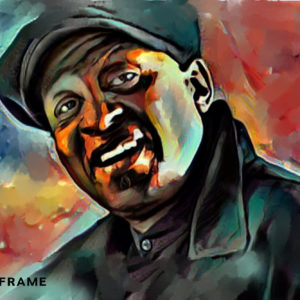Makoanyane’s historic figurines made digital
This colonial-era Lesotho artist carved sculptures that were so close a depiction of their reality that they could well have been mistaken for machine-made reproductions.
Author:
17 September 2021

Ceramic artist Samuele Makoanyane, who lived and worked in the village of Koalabata in the Teyateyaneng district not far from Maseru, displayed a profound gift for capturing intricate reproductions of people he met in everyday life. His adviser, agent and confidant CG Damant sold Makoanyane’s work in Frasers Trading store in Maseru, and shipped some to different parts of South Africa, what was then Rhodesia and select places abroad. Along this course of their partnership, Damant advised Makoanyane to create models of his own people rather than missionaries, and to keep his figurines small so that they were easier to transport.
In 1935, Makoanyane’s work was exhibited in Paris and New York, according to Esther Esmyol, curator in Iziko’s Social History Collections. In the same year Percival Kirby, then professor of music at the University of the Witwatersrand, commissioned Makoanyane to produce eight figurines of traditional musicians. Makoanyane made seven. It is speculated that he was unable to produce the eighth piece because the instrument involved was played at the lebollo male initiation ceremony, which is shrouded in secrecy. The exhibition then noted: “Makoanyane thought it beyond him to attempt the eighth, the lekhitlane player which was traditionally used in the lebollo ceremony. The reason for not completing this figurine is left unanswered.”
Unlike other pieces that Makoanyane produced, the Kirby Collection, now housed at the College of Music at the University of Cape Town (UCT), is unique. In 1936, Makoanyane’s work was on display at the Empire Exhibition in Johannesburg. Today, his work is found in private collections and museums in South Africa and all over the world.
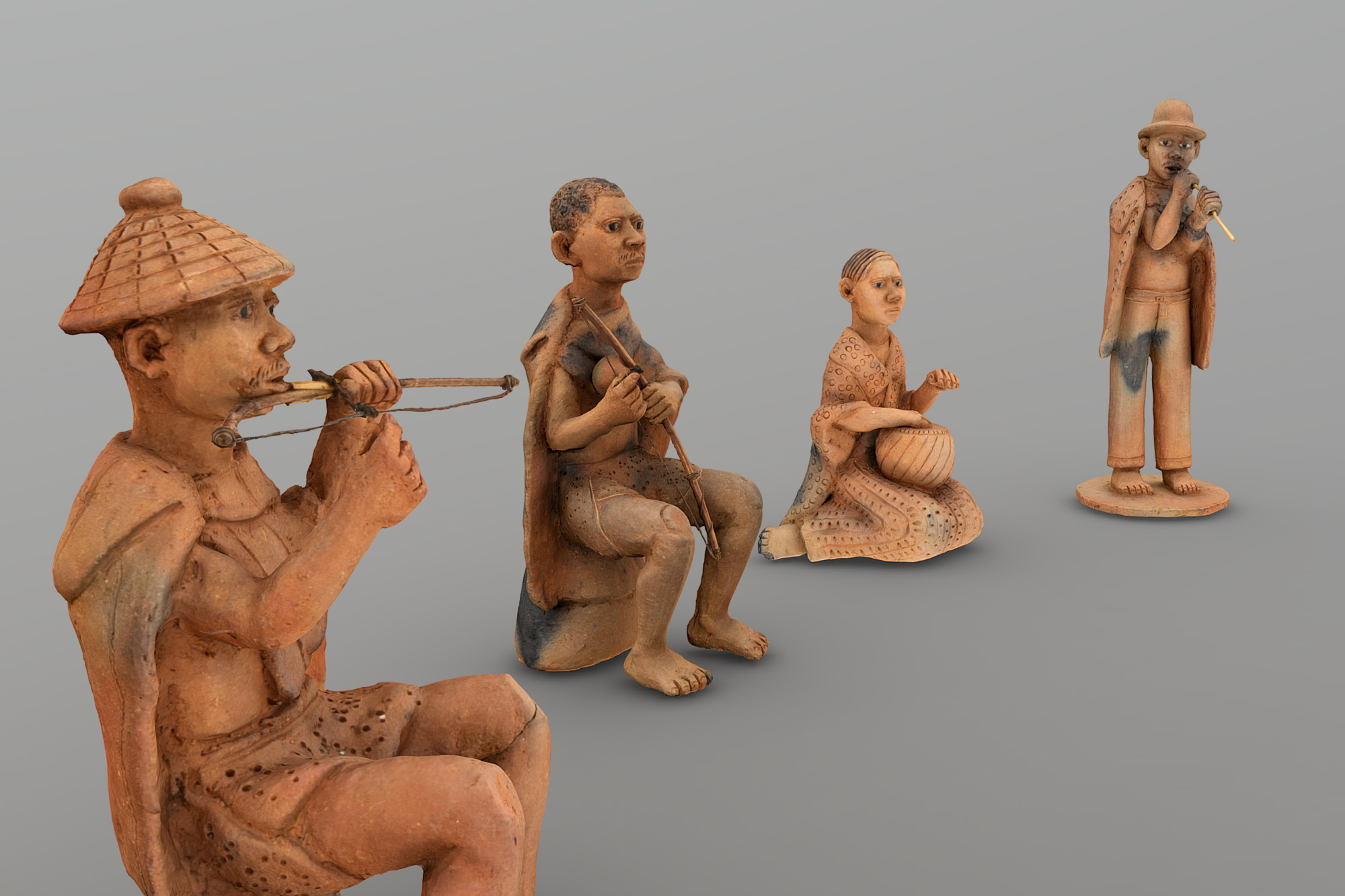
A booklet about Makoanyane written by Damant is a crucial source of information about the artist’s life and work. As Steven Sack, curator of Iziko’s Makoanyane show, notes: “It is the only account of the life of this neglected southern African pioneer of figurative portraiture in the 1930s.” The booklet points to how Makoanyane’s keen attention to the details of human life and his solitary lifestyle made him an outsider. Yet he was held in awe because of his skills and intelligence and, at the same time, feared by people who thought his powers of observation were unnatural and sinister.
“We grappled with the title of the exhibition,” Sack said. “I didn’t want to call it something like An unknown artist from Lesotho. Makoanyane used to end his letters to Damant with the words: Ke liha pene, which means, ‘I lay down my pen.’
“Once he constructed a figure, he would take a very fine instrument like a pen, known as a ‘scribe’ and inscribe into it some patterning and lines that really finally animated the work. It was almost as if he was writing the work into animated existence with this mode of very fine drawing; engraving onto the figurine. In a sense, when he finished making the sculpture and laid down the scribing tool, it was equivalent to the act of writing and laying down his pen. So, we decided to call the exhibition: Ke liha pene, I lay down my pen.”
A critical change in approach
The initial plans for the exhibition were thwarted when Covid-19 struck. “Originally, the exhibition was going to be a physical exhibition of the 11 pieces in the Iziko Collection, held at the South African Museum, and it was meant to open last year in September.
“But, of course, the physical exhibition had to be cancelled,” Sack said.
As it turns out, the reconceptualised exhibition has achieved what would not have been possible otherwise.
“Covid has produced some wonderful innovations,” said Sack.
Related article:
The delay also allowed for critical reflection. “If the exhibition had been held at the South African Museum, it would have been perpetuating the same old problem of putting Black culture in the context of a natural history museum,” said Sack, who has been aiming for a Makoanyane exhibition since he first came across the ceramic artist’s work in 1988, while curating the first exhibition of Black South African art at the Johannesburg Art Gallery – The Neglected Tradition: Towards a New History of South African Art (1930-1988).
“For me, it was important to move Makoanyane out of social history and out of ethnography into art,” said Sack.
For the exhibition, Sack worked with Jon Weinberg, whose company, DIJONDESIGN, is developing exhibitions for the Lesotho National Museum and Gallery, which is still under construction.
“The seminal seed for this project was a meeting in South Africa between officials from Lesotho and officials from Iziko,” Weinberg said. Initially Iziko, in collaboration with DIJONDESIGN, planned to offer training to conservators to work in the museum. “We were about to commence when Covid hit. We had to realign the relationship between Iziko and the Lesotho National Museum, and it made sense to do it in a virtual exhibition shared on both sides of the border…”
Photogrammetry
The exhibition uses photogrammetry as a way of making the Makoanyane figurines accessible to virtual audiences. “It is the perfect medium for these very small, very fragile sculptures which you would inevitably only ever be able to see behind glass,” Sack said.
Stephen Wessels, who works extensively with Weinberg, joined the team. Wessels studied geomatics at UCT and worked for the Zamani project, where he was involved in recording heritage sites all over Africa and in the Middle East in 3D using laser scanning and photogrammetry.
“Steven Sack had this idea of creating a virtual exhibition and I got drawn in to create the 3D models of the sculptures,” said Wessels.
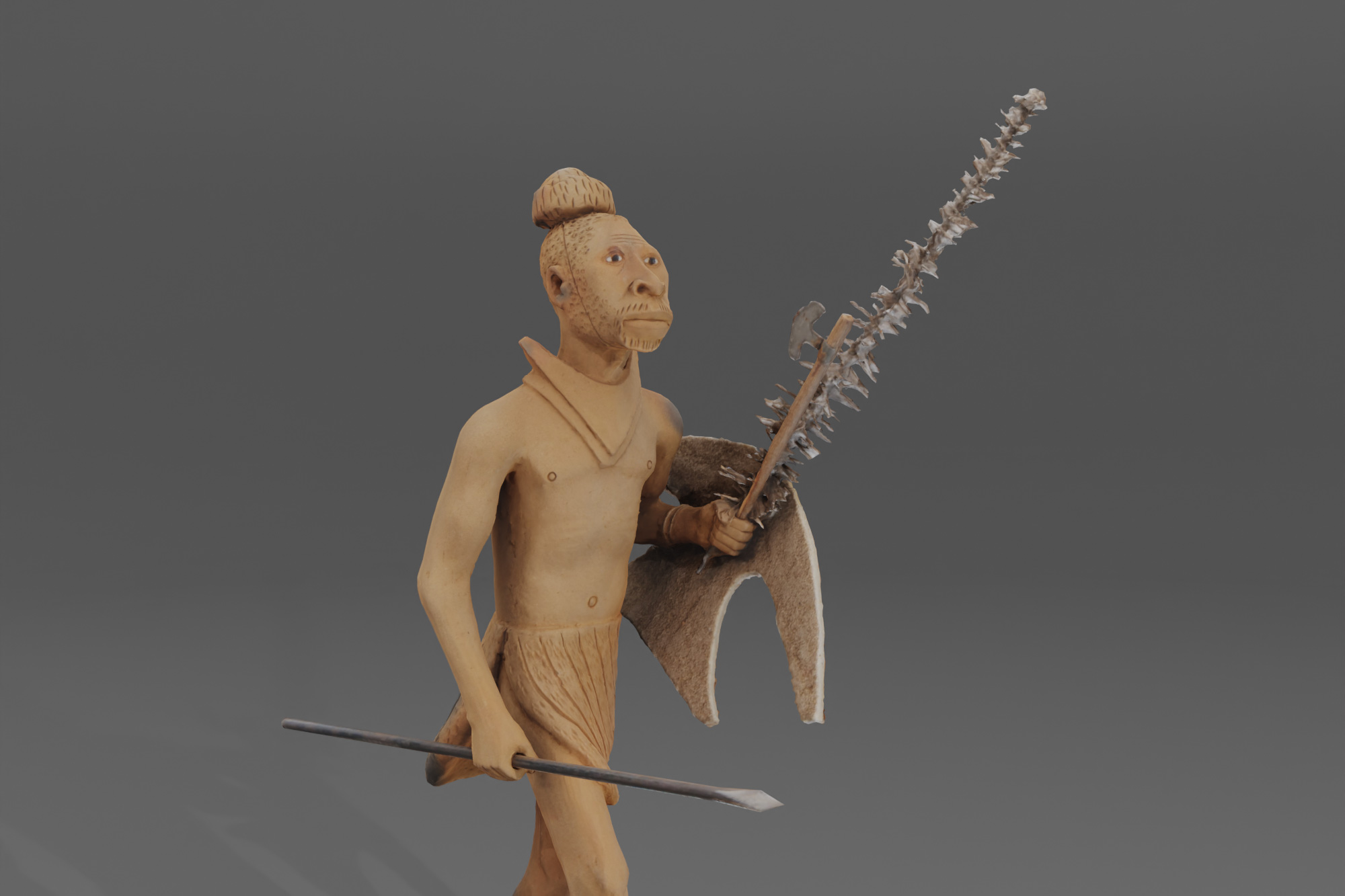
The photogrammetric method used to create 3D replicas involves placing an object on an automated rotating turntable and photographing it at 10 degree intervals from different perspectives for a full 360 degree rotation until it has been captured from every angle. The photographs are then run through specific photogrammetry software that aligns all the photographs and reconstructs the model based on information extracted from the photographs.
“It was done in a day and it was a safe method,” Esmyol said. “It’s really absolutely amazing. I don’t think you can get that detail in a physical exhibition.”
“Everyone has been very enthusiastic and it’s created a lot of discussion about other potential exhibitions,” Wessels said.
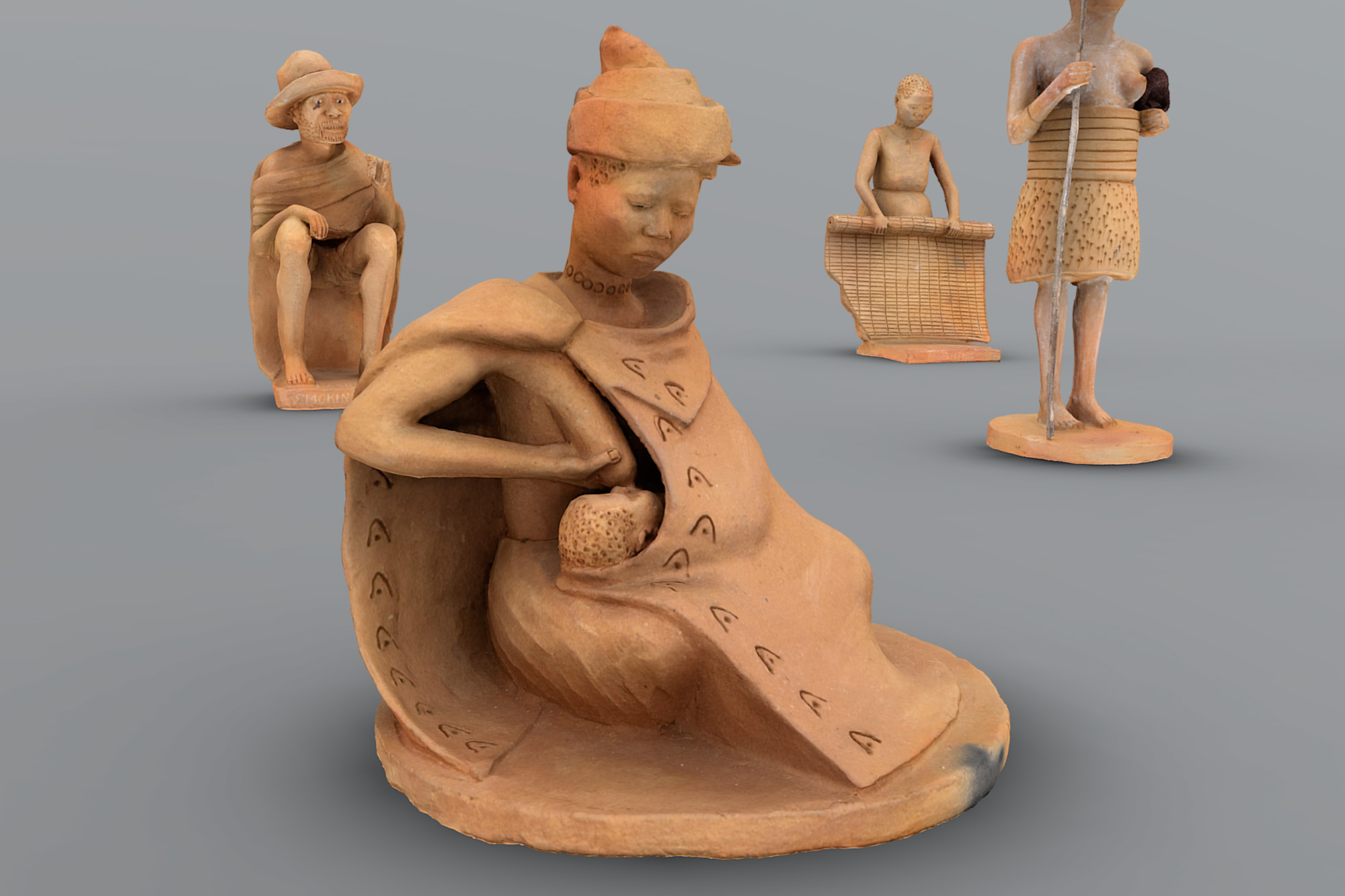
Combining shape and sound
With the inclusion of the Kirby collection, the UCT College of Music became partners in the project. Associate professors of Ethnomusicology and African Music, Sylvia Bruinders and Dizu Plaatjies, made a trip to the Morija Museum and Archives to meet people from Lesotho who are still playing the instruments. These musicians recorded, and the sounds will be used for the exhibition. Filmmaker Paul Weinberg filmed the musicians for both the college and the Lesotho National Museum.
“We went there and worked with the musicians who play these instruments that are not well known; in fact most are quite rare,” Bruinders said.
“One is a very, very soft instrument called the Lekope that plays a basic rhythm and has a very tiny melody; not many notes and very small intervals. It was played by an old woman [Matlali Khoane].
“The other instrument is a more iconic Basotho instrument called the Lesiba. The construction of the instrument is unusual: It has a string from one end to the other end of a stick, which you pluck, and a feather is attached that you exhale onto, and it vibrates the string. It has the most peculiar sound; it sounds like large birds. This was the instrument that was played by cattle herders. The Lesiba is a male instrument while the Lekope is a female instrument.”
Related article:
Manager and deputy curator at the Morija Museum, Pusetso Nyabela, organised the musicians. “Pusetso has been instrumental in providing content on a number of levels for the Makoanyane project and our other work,” Weinberg said. “Morija is a critically important cog in the process of developing a museum sector in Lesotho.”
“I have managed to locate all the instruments,” Nyabela said. “The most famous instruments that are in the exhibition are the Lesiba and the Lekope. The older instruments have been around since time immemorial; they were inherited from the San. Others are fairly new instruments that were co-opted, maybe in the 1930s,” Nyabela said.
The Lekope has traditionally been played for personal fulfilment. “Transport services came rather late in Lesotho and women would play the instruments while walking,” Nyabela said.
The Lesiba is also played for personal consolation, according to Leabua Mokhele, who is interviewed in the film. “After playing, I feel sane and alive,” he said.
“We were able to produce an exhibition that is not only about sculpture but also about performative cultures and music,” Sack said. “There is often an uncertainty on the part of audiences towards sculpture, so, having this musical aspect along with the exhibition makes it more accessible to a wider audience.”
The Ke liha pene, I lay down my pen virtual exhibition can be found on the Iziko website.

